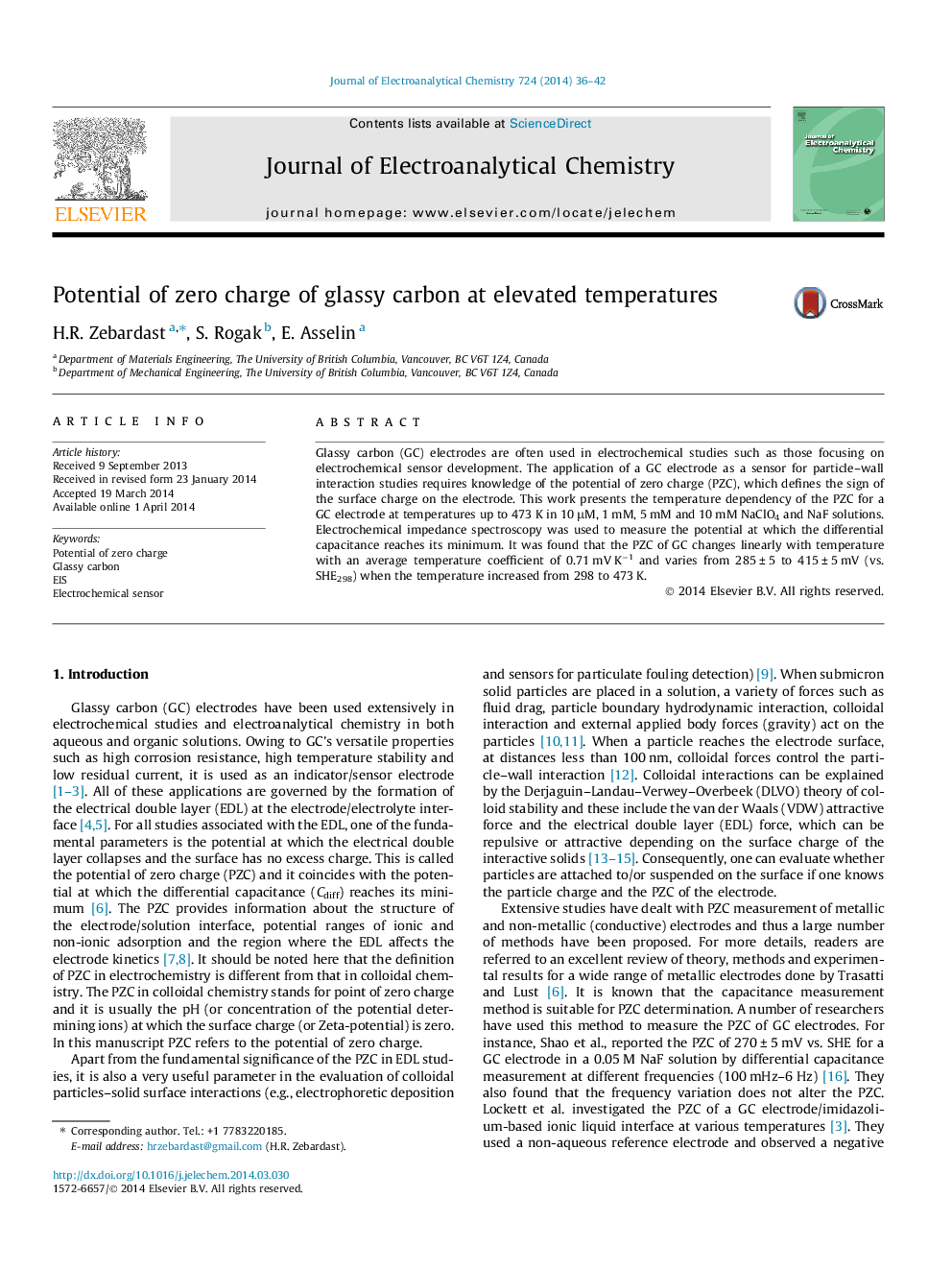| Article ID | Journal | Published Year | Pages | File Type |
|---|---|---|---|---|
| 218839 | Journal of Electroanalytical Chemistry | 2014 | 7 Pages |
•The potential of zero charge of glassy carbon is measured up to 473 K.•EIS is used to measure the minimum of the differential capacitance of glassy carbon.•An average temperature coefficient of 0.71 mV K−1 was measured between up to 473 K.
Glassy carbon (GC) electrodes are often used in electrochemical studies such as those focusing on electrochemical sensor development. The application of a GC electrode as a sensor for particle–wall interaction studies requires knowledge of the potential of zero charge (PZC), which defines the sign of the surface charge on the electrode. This work presents the temperature dependency of the PZC for a GC electrode at temperatures up to 473 K in 10 μM, 1 mM, 5 mM and 10 mM NaClO4 and NaF solutions. Electrochemical impedance spectroscopy was used to measure the potential at which the differential capacitance reaches its minimum. It was found that the PZC of GC changes linearly with temperature with an average temperature coefficient of 0.71 mV K−1 and varies from 285 ± 5 to 415 ± 5 mV (vs. SHE298) when the temperature increased from 298 to 473 K.
